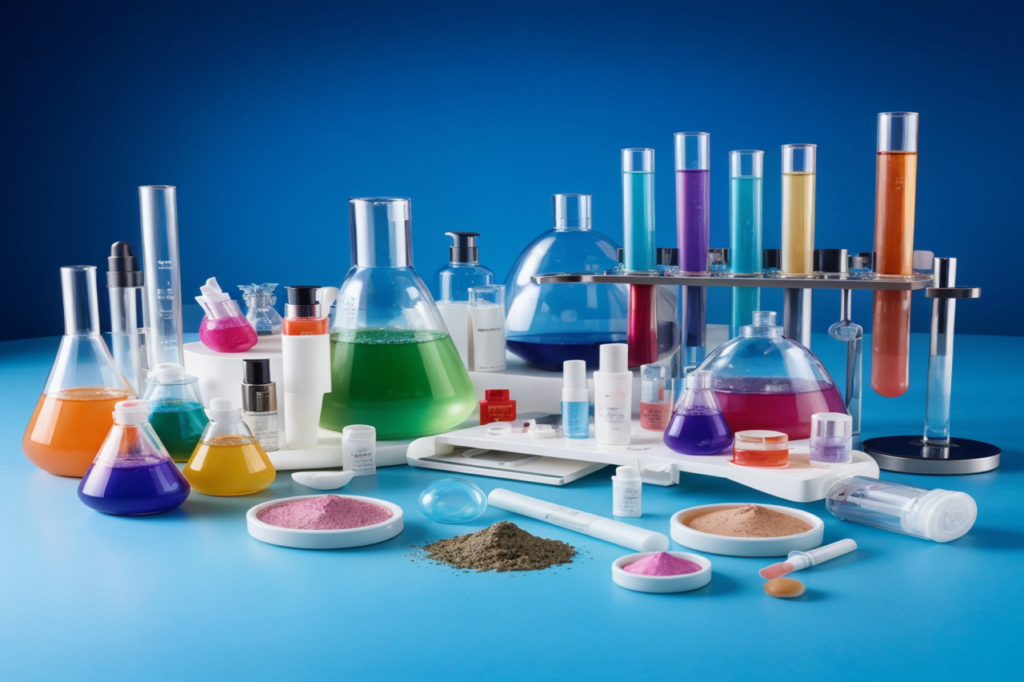
Absolutely, integrating the detailed scientific insights from the articles into your introductory exploration of cosmetics enhances the understanding of how beauty products work on a deeper level. Here’s how the extended article might look with the added insights:
**The Science of Beauty: How Cosmetics Enhance and Protect Your Skin**
Beauty has been a subject of fascination for centuries, with people constantly seeking ways to enhance their appearance. One of the most popular methods for achieving this is through the use of cosmetics. But have you ever wondered how these products actually work on your skin?
The science of beauty is a complex and intricate field that combines elements of chemistry, biology, and dermatology. Each cosmetic product is formulated with specific ingredients that target different aspects of the skin to produce the desired effect.
One of the key components of most cosmetics is active ingredients that target specific skin concerns. For example, products containing hyaluronic acid are designed to hydrate and plump the skin, while those with retinol aim to reduce the appearance of fine lines and wrinkles.
In addition to active ingredients, cosmetics also contain a variety of other components such as emollients, humectants, and preservatives. Emollients work to soften and smooth the skin, humectants attract moisture to the skin, and preservatives prevent microbial growth in the product.
The delivery system of a cosmetic product is also crucial to its effectiveness. Different formulations, such as creams, serums, and gels, are designed to deliver ingredients to the skin in a specific way to achieve optimal results.
Furthermore, the skin itself plays a significant role in how cosmetics work. The skin is made up of various layers, each with its own unique structure and function. Different cosmetic products are formulated to target specific layers of the skin, such as the epidermis (the outermost layer) or the dermis (the inner layer).
**Advanced Cosmetic Science**
The role of emollients, for example, extends beyond simple hydration. These substances, ranging from natural oils to synthetic agents, fill the spaces between skin cells, often damaged or dried out, effectively smoothing the texture of the skin. Humectants like glycerin, which draw moisture from the air and deeper layers of skin, are critical in maintaining the skin’s hydration levels.
Preservatives, though less glamorous, are indispensable in extending the shelf life of beauty products by preventing the growth of microbes. These ingredients, such as parabens and benzyl alcohol, are chosen for their ability to dissolve in the particular formulation they preserve, ensuring the product remains safe and effective throughout its usage.
**Innovations in Skincare**
Recent advancements in cosmetic science have significantly enhanced the efficacy of these products. Innovations include improved delivery systems that ensure active ingredients are absorbed where they are most effective, without compromising the skin’s natural barrier.
Understanding the chemistry behind skincare and the biological processes it influences, such as hydration and cell turnover, can empower consumers to make informed choices. For instance, knowing that a moisturizer contains occlusives and humectants can explain how it locks in moisture and why it might be beneficial for dry skin types.
It’s important to note that not all cosmetics work the same way for everyone. Factors such as skin type, age, and lifestyle can all affect how a product interacts with your skin. Experimenting with different products and formulations is often necessary to find what works best for you.





